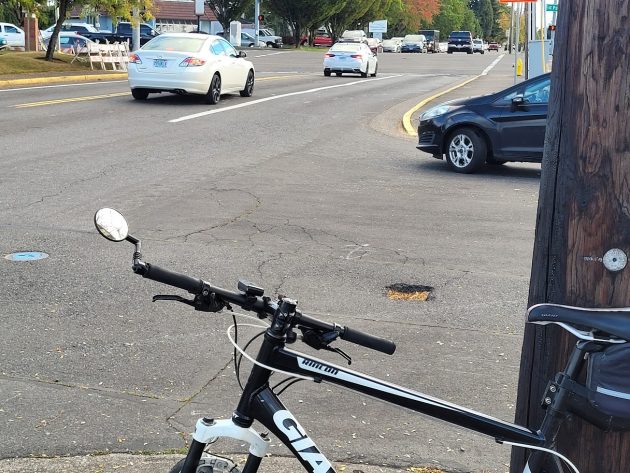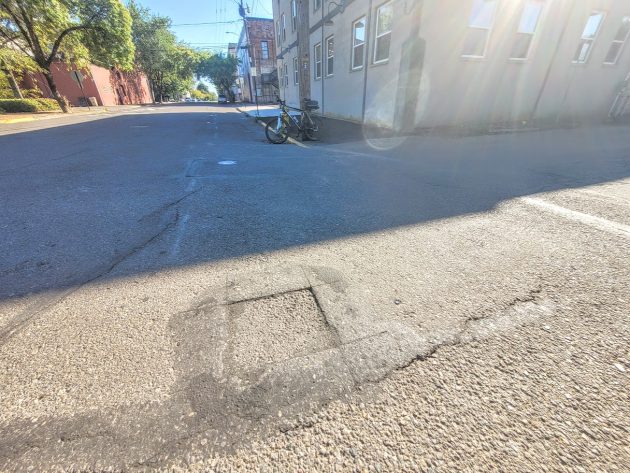
That little square hole in the pavement was still there Tuesday evening, on Fourth Avenue at Waverly Drive.
A few weeks ago I was wondering about a strange little hole in the pavement on Fourth Avenue in Albany right where it meets Waverly Drive. Now the hole’s shape, square with vertical sides a few inches deep, is a mystery no more.
The hole has been there for a long time, maybe a year or more. I wrote something about it last month, on Sept. 2, a particularly slow day, wondering how come it was there and how it had come to be.
Then, later, I noticed similar square cuts in the pavement elsewhere, particularly on Water Avenue downtown. You notice stuff like that when riding a bike and keeping a watchful eye on the pavement below. But these holes had been repaved after they were cut.
Finally I asked someone who should know. As transportation manager for the City of Albany, Robb Romeo knows about city streets. I sent him the photos that go with this story and asked him if he could explain the square cuts.
In an email he did:
“As you can see in the pictures, these square holes are near the water valves in the street. Contractors will ‘pothole’ a section of the street to confirm the correct depth of a utility when they are making repairs and or upgrades. Also, when contractors are going to bore under an intersection or street (see the gas company at the corner of Pacific and Waverly), they will use this technique to determine the depth of a utility as well. You can see the overcuts by the saw blade in the picture on Water Ave, making sure that they cut the square completely, making it easier to remove. Hope this is helpful in answering your question.”
Yes, thanks, very helpful.
So that covers that. The only question now is how much longer the square little hole that first drew my attention is going to remain unfilled. (hh)

Here’s a similar cut in the pavement, on Water Avenue near Ferry Steet. But this one was repaved long ago.


Why in the hell do they leave the square hole in the pavement at Waverly and 4th unfilled? Are they that hard up for employees to take care of it?
” Also, when contractors are going to bore under an intersection or street (see the gas company at the corner of Pacific and Waverly), they will use this technique to determine the depth of a utility as well.”
It’s likely the contractor’s responsibility to fix it, and I’d be the City has/will notify them to fix it.
Why should the city spend additional public money to fix a private company’s mistake?